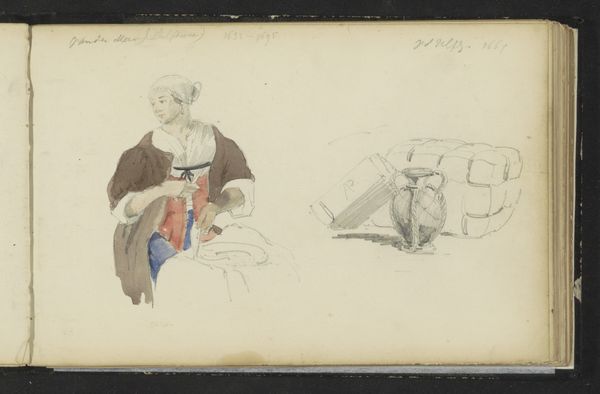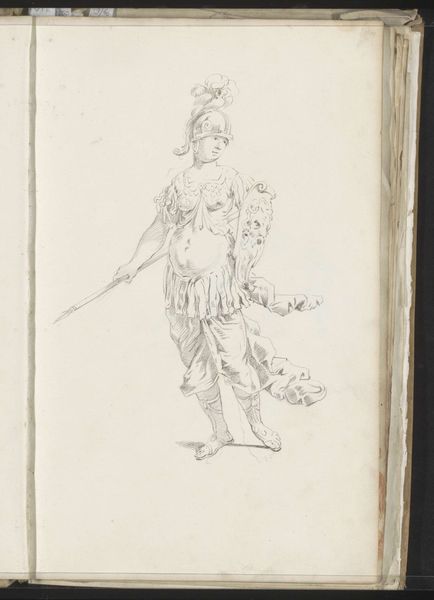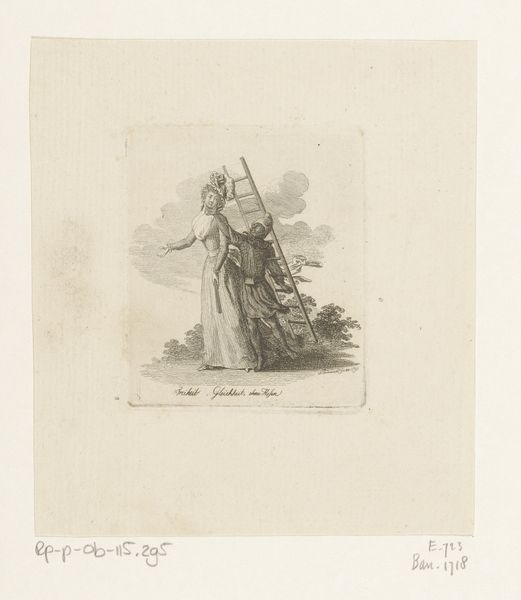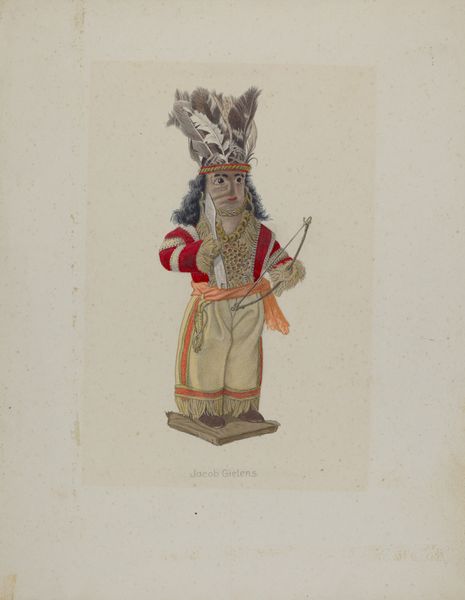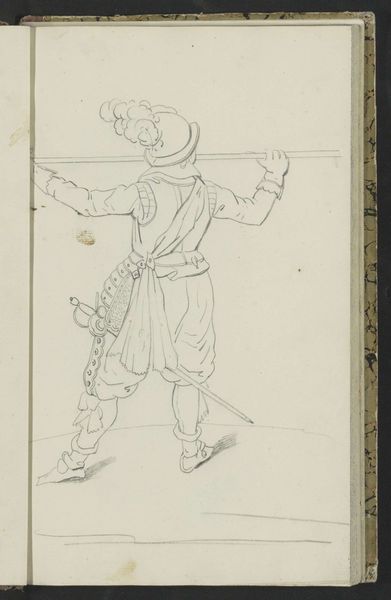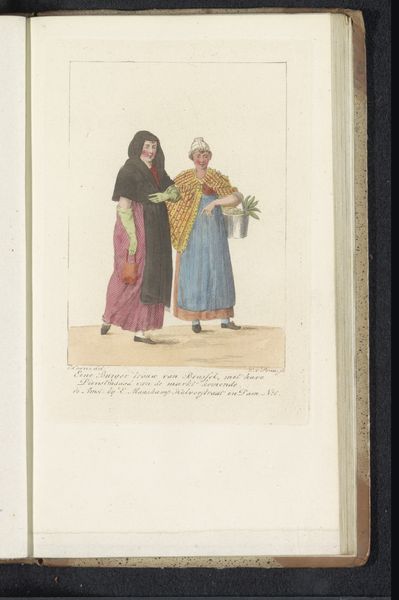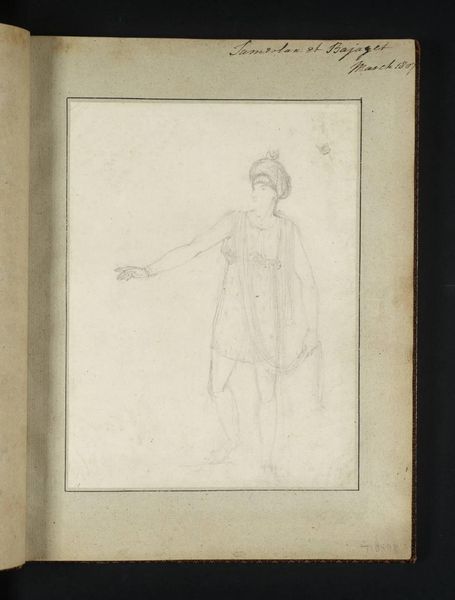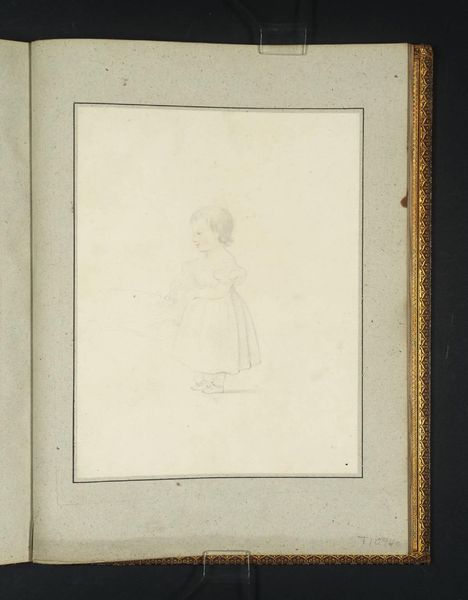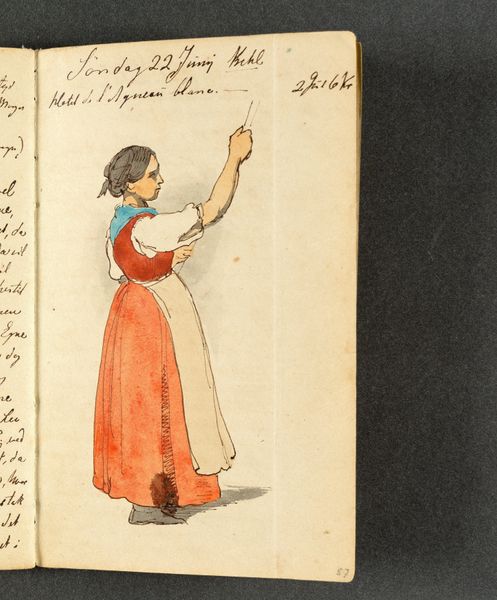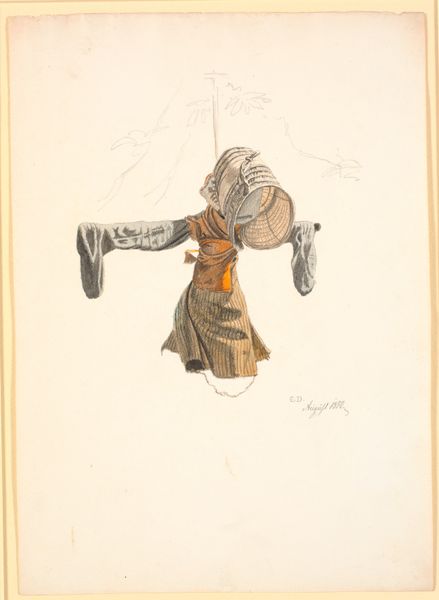
drawing, coloured-pencil, watercolor
#
portrait
#
drawing
#
neoclacissism
#
coloured-pencil
#
figuration
#
watercolor
#
coloured pencil
#
history-painting
#
watercolor
Dimensions: 252 mm (height) x 185 mm (width) (bladmaal)
Curator: This drawing, titled "En moder og hendes lille pige," which translates to "A Mother and Her Little Girl," was created by Nicolai Abildgaard in 1777. It's a beautiful example of neoclassicism rendered in watercolour and coloured pencil. What strikes you about it? Editor: The overwhelming whiteness. The drawing is so faded and sparse, almost ethereal, like a memory fading with time, yet retaining a crisp quality in the lines. Is that intentional, or is that the result of the watercolour aging? Curator: That's a fantastic observation. The paper has aged, certainly, but the lightness is very much a feature of Abildgaard’s neoclassical style, which embraced simplicity and a sense of the ideal. Note the subjects’ drapery: It’s rendered in flowing, spare lines. Editor: I'm wondering about the materiality. It’s a drawing, so ostensibly preparatory. What kind of labor went into this seemingly quick rendering? Curator: A fascinating point, the labour that is hidden to present simplicity and grace. Abildgaard, while influenced by the classical ideals of his time, saw himself primarily as a history painter. Perhaps he conceived it as part of a larger narrative tableau? His primary employment, if one could call it that, would have come from larger works commissioned. Editor: This brings up how we think of "drawing" itself – often understood as something quickly jotted. The image gestures towards grander classical narratives and history painting—yet, it's confined within this small scale, delicate medium. Curator: Indeed. It makes me think about intimacy. While neoclassicism often carries a sense of grandiosity, here we see a quieter moment. The mother holds a strand of thread, the child reaches up. It suggests domestic life, perhaps even a little glimpse into the artist's own. And that muted palette actually intensifies this feeling for me. The work whispers, rather than shouts. Editor: I agree, the colour certainly invites closer observation and intimacy, drawing us to focus on the small domestic and interior life against the background of greater society and wealth. I would say its worth remembering to what lengths the artist and indeed other artists have gone to present that particular image of classical antiquity, despite it never truly existing. Curator: A fantastic point to consider: Abildgaard and his contemporaries reimagined and idealized the classical past through drawings such as this one. Thanks for those wonderful comments! Editor: Likewise! It has been interesting reflecting on the dialogue between form, material and idealised subjecthood.
Comments
No comments
Be the first to comment and join the conversation on the ultimate creative platform.
